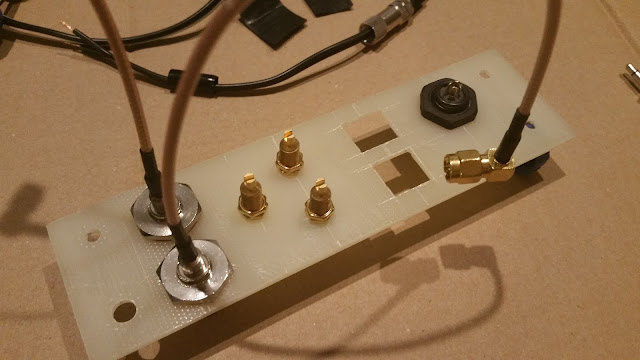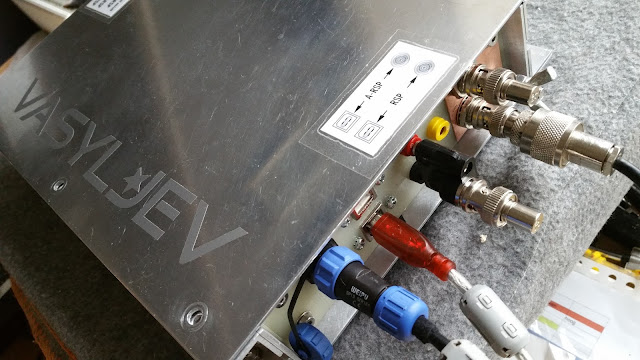[See older posts for project step-by-step here]
The thing, with its SDRplay heart beating inside, works like a champ. No USB noise at all, only plain atmospheric noise and a few restless electrons in all (semi)conductors. Feels like analogue times.
The RSP is slightly professionalized. The unit is mostly powered from a cheap 10000 mAh USB power bank which guarantees days of receiving fun.
The next small big thing on the schedule is the implantation (implementation by soldering) of a second heart, the Airspy R2 and a HF converter. I have not yet decided which HF converter; The choice is between the Spyverter and the SV1AFN converter. Both have their own architectures - hence their own advantages and disadvantages. If you have any suggestions, please let me know.
 |
| The thing, in working state |
Before I do the Airspy & converter implantation, I will prepare a few other small accessories.
First I will assemble an external, ruggedized LNA unit which can be powered by either phantom or external power. I tend to the LNA4ALL. If you have any suggestions for other LNA's, please let me know.
 |
| Copyright LNA4ALL |
The second accessory is a FM broadcast band rejection filter. I have ordered the F1JKY filter which is a optimized Chebyschev 7-th order filter with high quality components.
 |
| Copyright F1JKY |
The back plate of my SDR is now equipped with a M6 earth rod made of stainless steel. That can be very useful for HF listening.
 |
| Earth rod |
I will keep you informed.























































